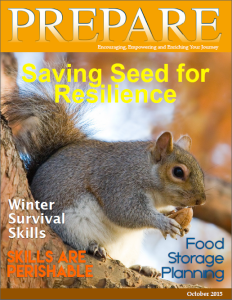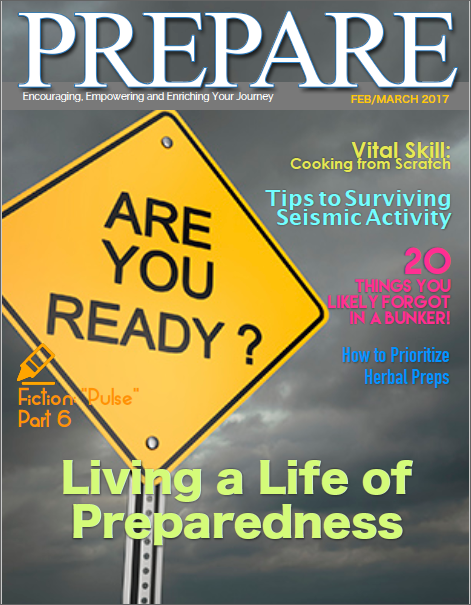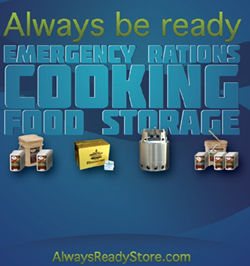It’s an unsettling thought, but have you ever wondered what you would do if the worst were to happen? Whether it’s a natural disaster, financial crisis, or personal tragedy, life can sometimes throw us curveballs.
This guide is designed to help you navigate these uncertainties, providing you with the tools and strategies needed to prepare for any worst case scenario. We delve deep into the complexities of planning for the unexpected, offering practical advice and insights to help you stay ahead of the game.
Join us as we explore the art of preparation, and how to turn potential challenges into opportunities for growth and resilience. This journey is not about fostering fear, but about empowering you to face any situation with confidence and composure. So, are you ready to embrace the uncertainty? Let’s get started.
What Is A Worst Case Scenario?
 A worst case scenario is an outcome where all possible variables or conditions have resulted in the most unfavorable situation. It is a term often used in risk management, planning, and decision-making processes. The concept encourages individuals or organizations to consider the most severe possible outcome and plan accordingly.
A worst case scenario is an outcome where all possible variables or conditions have resulted in the most unfavorable situation. It is a term often used in risk management, planning, and decision-making processes. The concept encourages individuals or organizations to consider the most severe possible outcome and plan accordingly.
This type of scenario planning is crucial in preparing for worst case scenarios. It involves a thorough analysis of potential risks, their impacts, and the development of strategies to mitigate them.
There are several steps involved in preparing for worst case scenarios:
1. Identifying potential risks: This involves brainstorming and analyzing all possible risks that could lead to a worst case scenario.
2. Evaluating the impact: Once the risks have been identified, the next step is to evaluate their potential impact. This could include financial loss, damage to reputation, or even physical harm.
3. Developing a response plan: After understanding the potential impact, a response plan is developed to mitigate these risks. This could involve contingency plans, backup systems, or emergency protocols.
4. Implementing the plan: The final step is the implementation of the plan. This involves training, testing, and regularly reviewing the plan to ensure its effectiveness.
In essence, a worst case scenario is not just about imagining the worst. It’s about preparing for the worst and ensuring that you or your organization is ready to handle any adversity that may come your way. It’s about resilience, foresight, and the ability to adapt in the face of challenges.
How To Prepare For Natural Disasters?
Preparing for natural disasters involves a range of strategies, from creating an emergency plan to stocking up on essential supplies. A crucial step is to stay informed about the potential risks in your area. This could involve researching historical weather patterns or subscribing to disaster alerts.
Emergency plans should be comprehensive, covering all possible scenarios. This includes identifying safe spots in your home, planning escape routes, and establishing communication methods with family members. It’s also crucial to practice these plans regularly to ensure everyone knows what to do.
Stockpiling essential supplies is another vital aspect of disaster preparedness. This includes non-perishable food, water, medical supplies, and important documents. Consider packing a “go bag” with essentials that can be easily grabbed in case of an evacuation.
In addition to physical preparations, mental preparedness is equally important. This involves understanding the emotional impact of disasters and developing coping strategies. It can be beneficial to seek professional help or join support groups to help manage stress and anxiety related to disasters.
Lastly, it’s important to consider insurance coverage. This can provide financial protection in case of property damage or loss.
Preparing for natural disasters is a continuous process, requiring regular review and updates to plans and supplies. By taking these steps, you can ensure you’re ready to face any worst case scenario that may arise.
Can Insurance Cover Worst Case Scenarios?
The question of whether insurance can cover worst case scenarios is one that often arises when individuals begin preparing for unforeseen circumstances. Insurance policies are designed to provide financial protection against a variety of risks, from natural disasters to health issues. However, the extent of coverage largely depends on the specific terms of your policy.
For instance, homeowners insurance typically covers damage caused by events like fires or storms, but may not cover flood damage unless you have a specific flood insurance policy. Similarly, health insurance can cover a wide range of medical expenses, but might not cover certain treatments or procedures, leaving you with out-of-pocket costs.
When it comes to planning for worst case scenarios, it’s important to thoroughly review your insurance policies. Understand what is covered and what isn’t. In some cases, you may need to purchase additional coverage or a separate policy to ensure you’re fully protected.
• Life insurance, for example, is a crucial aspect of preparing for the worst. It provides financial support to your loved ones in the event of your death, helping them cope with loss of income, funeral costs, and other expenses.
In conclusion, while insurance can provide significant protection against worst case scenarios, it’s not a catch-all solution. You need to carefully consider your personal circumstances and potential risks when assessing your insurance needs.
Why Is It Important To Prepare For The Worst?
The significance of preparing for the worst is often underestimated. However, it’s an essential part of life planning that cannot be overlooked. By anticipating potential challenges, you are better equipped to handle them effectively, minimizing their impact on your life.
Preparing for the worst-case scenario allows you to maintain control in situations where you would otherwise be overwhelmed. Whether it’s financial instability, health crises, or natural disasters, having a plan can make the difference between chaos and stability.
One key aspect of preparation is creating an emergency fund. This serves as a financial safety net, ensuring you can meet your basic needs even when faced with unexpected expenses.
Another important part of worst-case scenario planning is risk assessment. By identifying potential threats, you can develop strategies to mitigate their impact. This could involve purchasing insurance, improving your health habits, or even making changes to your home to withstand natural disasters.
Lastly, preparing for the worst-case scenario encourages resilience. When you’re prepared, you’re less likely to be caught off guard by life’s curveballs. Instead, you’ll have the confidence and resources to face challenges head-on, fostering a sense of empowerment and resilience.
In the grand scheme of things, preparing for the worst doesn’t mean living in constant fear. Rather, it’s about taking proactive steps to ensure your well-being and peace of mind, no matter what life throws your way.
What Are Some Common Worst Case Scenarios?
In the realm of preparation, it is essential to identify potential worst case scenarios. One such scenario is a natural disaster, such as a hurricane, earthquake, or flood. These events can lead to loss of life, property damage, and displacement. Therefore, it is vital to have a disaster preparedness plan in place.
Next, consider the possibility of a medical emergency. This could range from a sudden illness or injury to a global pandemic. Having a well-stocked first aid kit, knowing basic first aid procedures, and maintaining good health practices can mitigate these risks.
Financial crises are another common worst case scenario. Job loss, unexpected expenses, or economic downturns can lead to severe financial strain. To prepare, it is advisable to build an emergency fund, diversify income sources, and regularly review and adjust your budget.
Lastly, the threat of cyber attacks is increasingly prevalent in our digital age. Identity theft, data breaches, and online scams can have devastating effects. To combat this, it is crucial to use strong, unique passwords, enable two-factor authentication, and stay informed about the latest cyber threats.
Remember, preparing for worst case scenarios is not about living in fear, but rather about empowering yourself to handle whatever life throws your way.
How To Make A Disaster Preparedness Plan?
 When faced with a potential disaster, having a well-crafted preparedness plan can make all the difference. The first step in creating a disaster preparedness plan is to identify the types of disasters that could potentially affect your area. This could range from natural disasters like earthquakes and hurricanes to man-made disasters such as power outages or chemical spills.
When faced with a potential disaster, having a well-crafted preparedness plan can make all the difference. The first step in creating a disaster preparedness plan is to identify the types of disasters that could potentially affect your area. This could range from natural disasters like earthquakes and hurricanes to man-made disasters such as power outages or chemical spills.
Once you’ve identified potential threats, the next step is to create a communication plan. This should include contact information for all family members, as well as a designated meeting place in case of evacuation. It’s also important to have a backup plan in case the primary plan falls through.
Another essential part of a disaster preparedness plan is having an emergency supply kit. This should include enough food, water, and medical supplies to last for at least three days. Other items to consider include flashlights, batteries, and a portable radio.
Lastly, it’s important to regularly review and update your plan. This will ensure that it remains effective and relevant. It’s also a good idea to practice your plan with all family members to ensure everyone knows what to do in case of a disaster.
Disaster preparedness is not something to be taken lightly. By taking the time to create a comprehensive plan, you can greatly increase your chances of surviving and recovering from a disaster. Remember, the key to successful disaster preparedness is planning, preparation, and practice.
What Supplies Are Needed For Worst Case Scenarios?
When preparing for worst case scenarios, your survival kit should be comprehensive yet practical. Non-perishable food and water are key, with enough supplies to last each person for at least three days. Consider foods that are high in energy and easy to prepare, such as canned goods, dried fruits, and energy bars.
Another essential is a first aid kit. This should include bandages, antiseptic wipes, tweezers, medical tape, and any necessary prescription medications. A manual on basic first aid procedures can also be invaluable in a crisis situation.
A multi-purpose tool is a critical inclusion, providing you with a knife, can opener, screwdriver, and more in one compact item. Other practical items to pack are a flashlight, extra batteries, a whistle to signal for help, and local maps.
For communication and information, consider including a battery-powered or hand-crank radio. If possible, a portable charger for your mobile devices could also prove useful.
In the event that you need to evacuate quickly, having important documents stored in a waterproof container is crucial. This includes identification, insurance policies, bank account records, and contact details of family members.
Lastly, personal hygiene items such as toilet paper, soap, and feminine supplies are often overlooked but are necessary for maintaining health and morale during a disaster.
Preparing for worst case scenarios is about more than just physical supplies, it’s also about mental readiness. Knowledge and preparation can help you stay calm and make better decisions when it matters most.
How To Mentally Prepare For Worst Case Scenarios?
Preparing for worst case scenarios can be a daunting task. However, it’s essential for maintaining mental fortitude and resilience. One way to prepare is by visualizing the scenario. This technique, often used by athletes and performers, can help you anticipate potential challenges and formulate responses.
Another strategy is stress inoculation. This psychological approach involves gradual exposure to stressors, helping you build resilience over time. It’s akin to a mental workout, strengthening your ability to handle high-stress situations.
Next, consider scenario planning. This process involves identifying potential outcomes and creating strategic responses for each. It’s a proactive approach that can provide a sense of control, reducing anxiety and fear.
1. Mental Rehearsal: Repeatedly visualizing successful navigation through a worst-case scenario can create a mental blueprint. This can help reduce panic and enable you to act effectively when faced with the actual situation.
 Remember, it’s important to balance preparation with positivity. Constantly dwelling on worst-case scenarios can lead to unnecessary stress and anxiety. Instead, use these strategies as tools for empowerment, not sources of fear. Practice mindfulness and relaxation techniques to maintain a positive mindset amidst your preparation. Lastly, remember that seeking professional help is always an option if you find it difficult to manage your fears or anxieties.
Remember, it’s important to balance preparation with positivity. Constantly dwelling on worst-case scenarios can lead to unnecessary stress and anxiety. Instead, use these strategies as tools for empowerment, not sources of fear. Practice mindfulness and relaxation techniques to maintain a positive mindset amidst your preparation. Lastly, remember that seeking professional help is always an option if you find it difficult to manage your fears or anxieties.
Conclusion: Preparing for the Worst Case Scenario
In our in-depth exploration of the worst-case scenarios, we’ve covered a wide range of topics. We’ve defined what a worst-case scenario is and outlined the importance of being prepared for such situations. We’ve discussed the role of insurance in mitigating the impact of worst-case scenarios and highlighted the necessity of a well-thought-out disaster preparedness plan.
We’ve also delved into the mental aspect of preparing for worst-case scenarios, emphasizing the importance of psychological readiness alongside physical preparedness. Furthermore, we’ve identified some common worst-case scenarios and provided a comprehensive list of supplies needed to brace for these situations.
As we look to the future, it’s crucial to stay informed about potential developments or trends that may influence these worst-case scenarios. Remember, preparation is not about fostering fear but rather about empowering oneself. Being prepared allows us to face any situation with confidence, knowing we’ve done our best to mitigate potential risks.
In conclusion, preparing for worst-case scenarios is a vital aspect of life. It’s not merely about surviving a disaster but also about maintaining our mental wellbeing in the face of adversity. So, continue to educate yourself, stay vigilant, and always be prepared.




